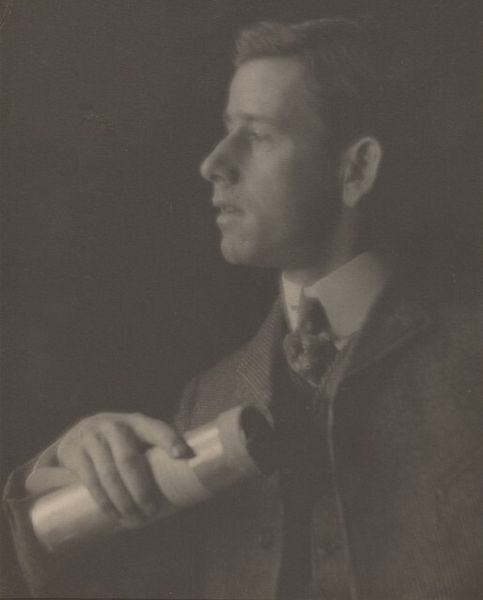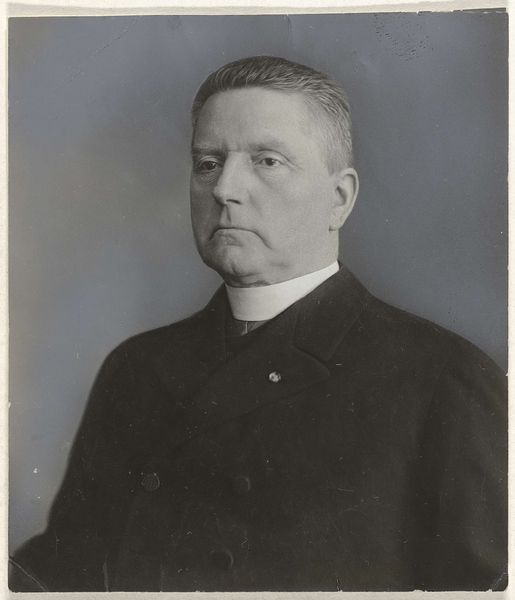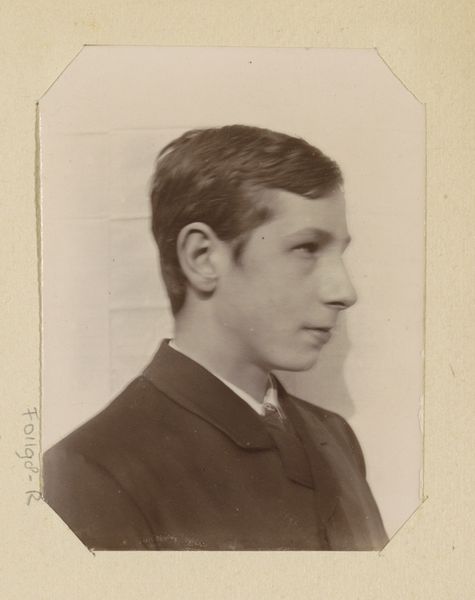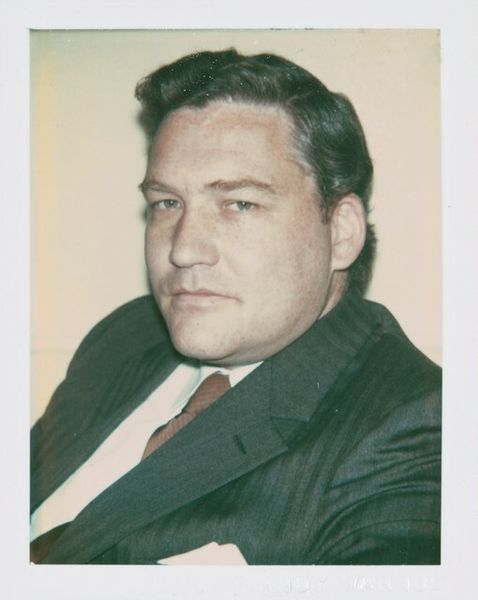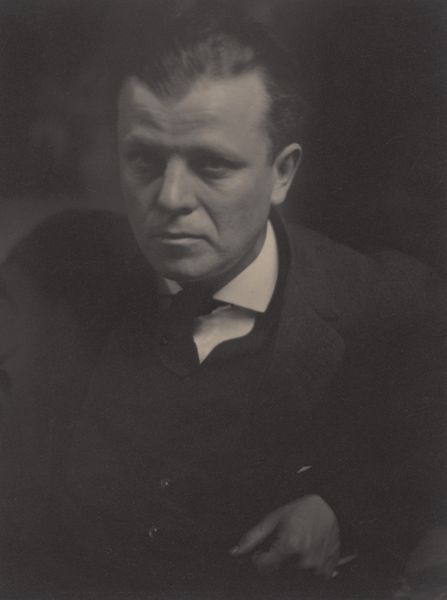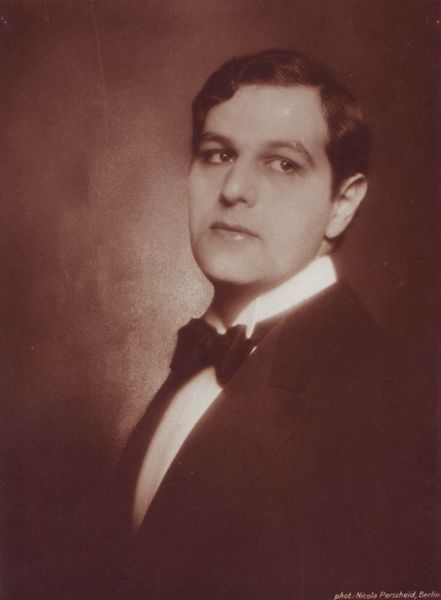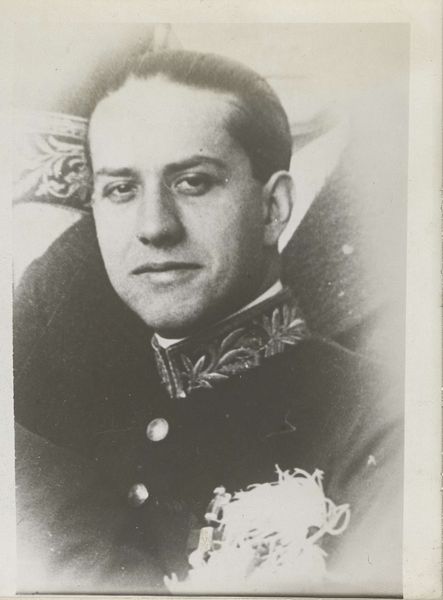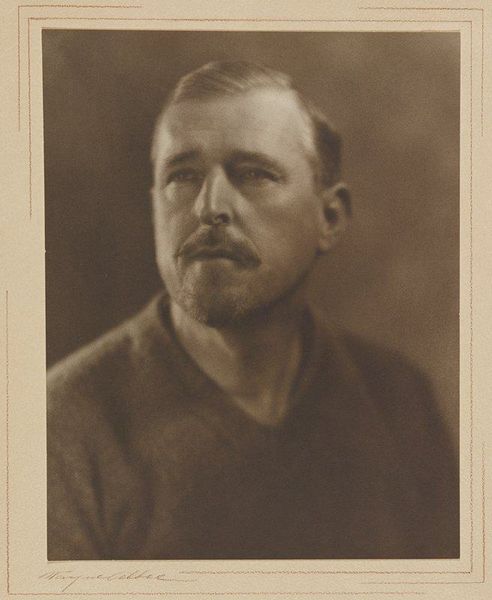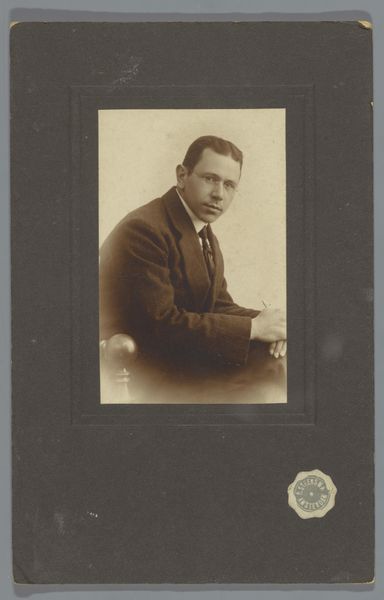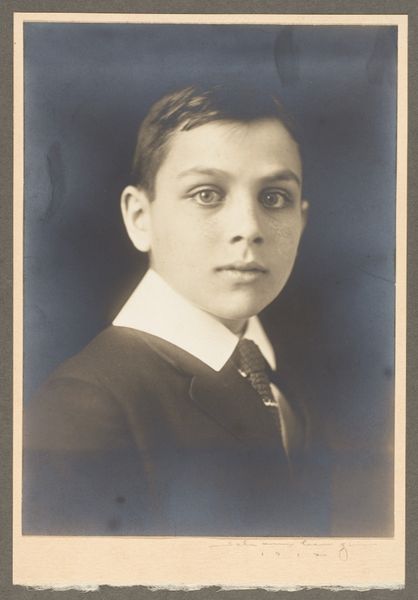
photography
#
portrait
#
photography
#
modernism
#
realism
Dimensions: height 79 mm, width 53 mm
Copyright: Rijks Museum: Open Domain
Editor: Here we have "Portret van Gerard Reve," a photographic portrait from 1966, created by Anefo. The photograph feels rather stark, almost confrontational with its monochrome tones. What stands out to you? Curator: The focus for me immediately goes to the production of this image, right? What kind of darkroom techniques were available and used in the '60s to create this kind of tonal range, these shadows, in a reproducible format. It raises questions about the accessibility of portraiture at this time and the cultural value placed on this particular individual, Gerard Reve, enabling the material investment. How were photographic portraits being consumed then? Were they destined for newspapers, personal collections, or something else entirely? Editor: That's a fascinating perspective. I hadn't really considered the socio-economic factors involved in producing a seemingly simple portrait. Does the background material affect your reading? Curator: Absolutely. Consider what's behind Reve - the textures and pattern give us visual clues to place and class, the kind of studio or environment shaping how we encounter him, perhaps even revealing something about the labor behind crafting such spaces. Are these elements included intentionally to portray something specific about Reve, or are they incidental? Whose agenda is at play here in material decisions and photographic framing? It’s far more complex than just an image of a man, isn't it? Editor: It really is. Thinking about it that way opens up so many more questions about the choices that went into creating it and its impact. Thanks. Curator: Precisely, focusing on these aspects can give any artwork a much broader context.
Comments
No comments
Be the first to comment and join the conversation on the ultimate creative platform.
